Coral Reefs: Threats to Their Challenges + Survival
Gary Griggs | Distinguished Professor of Earth Sciences | University of California Santa Cruz
Coral reefs form the geologic, biological, and economic basis of many tropical ocean coastlines and small island nations. They serve as the foundation for important fisheries and tourism industries, as well as providing a natural buffer to shorelines from wave attack. Reefs are also among the most productive and diverse ecosystems on the planet and provide home, shelter, and breeding grounds for one-third of the world’s estimated 25,000 – 30,000 species of marine fish. As tropical tourism has expanded, however, and the exploitation of coral reefs for a wide range of living and non-living resources has increased, the pressure on these often-fragile environments has grown. Many of the world’s coral reefs are already in decline through such diverse activities as destructive fishing practices, including overfishing; terrestrial land use practices that have led to soil erosion, runoff, and siltation on reefs; blasting for harbors, airfields, and other construction; sand mining for construction; cruise ship and dive boat anchoring; and invasive species and disease. Climate change is adding to the problems reefs are already facing; coral bleaching from higher water temperatures and ocean acidification are both amplifying the present stresses these environments are being exposed to. How can we protect the remaining healthy reefs and help those that have been damaged recover from the destructive practices of the past?
Introduction
Corals first appeared in the evolution of the Earth over 500 million years ago, but it took another 100 million years or so until they became widespread and common in the fossil record. After millions of years of building reefs, surviving mass extinctions and glacial and interglacial periods with rising and falling sea levels, it looks like human activities across the face of the planet are producing the most serious threats to these simple organisms and the very large and complex ecosystems and structures they have created.
Australia’s Great Barrier Reef, about 1,200 miles long and 90 miles wide, is usually recognized as the largest organic structure on the planet built completely by living organisms. Although coral polyps are tiny and lack backbones, they build rock-hard structures of calcium carbonate that can survive storm waves, typhoons, tsunamis, and a number of other natural processes but are not immune to the activities of humans.
There are actually two quite different types of corals, ahermatypic and hermatypic. Both types are actually colonies of small animals (coelenterates biologically) that build a common skeleton or structure, which can take many different colors and shapes.
- Ahermatypic– these are solitary corals that have no symbiotic algae and therefore aren’t restricted to the near-surface waters where light can penetrate. Solitary corals can live in very deep cold water in utter darkness, in fact as deep as 20,000 feet, and form what have relatively recently been recognized as lush coral gardens, with nearly as much species diversity as reef-forming corals, but in deep dark waters. Having no symbiotic algae, these corals gain all of their nutrition by capturing small plankton with their tentacles. Instead of forming rock-like reefs, these cold-water corals form groves of tree, feather, column or fan shapes, sometimes dozens of feet high. Many other marine organisms, including fish, shrimp, crab and others use these groves or gardens as their habitats.
Some of the more exotic corals often use for jewelry, such as black or red coral, fall into this group and typically live in deep water where they are far below the visibility of shallow water snorkelers. These deep-water species grow quite slowly, often just a few millimeters per year, and some have been recorded up to several thousand years old. Little was known about the distribution of these unique corals until perhaps the last 50 years when deep water camera surveys in the Gulf of Alaska revealed these bright-colored and diverse coral gardens. Subsequent deep-sea photographs illuminated their presence across many degrees of latitude and at a variety of depths and water temperatures.

Because of their very slow growth rate, and often delicate structures, they are easily damaged by seafloor trawling for fish, in laying undersea cables or pipelines, or in the emerging efforts to extract or mine minerals from the deep sea, so protection has become necessary.
The stalks of some of these cold and deep-water corals have also been discovered to be recorders of changing ocean conditions. Their stalks or stems are like the trunks of trees in putting on regular rings, which record the changing chemistry and temperature of the seawater over time. In this sense, they actually can serve as paleo-oceanographic records.
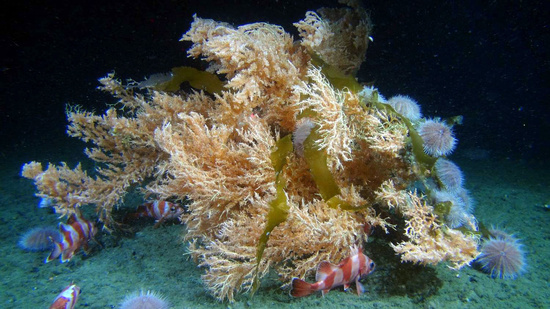

- Hermatypic– these are the reef building colonial corals and are unique in having a symbiotic or partnership relationship with algae (dinoflagellates), which actually grow within the coral polyps. This is usually a very productive relationship with the algae using carbon dioxide, water and a few key nutrients to produce food and oxygen through the process of photosynthesis. The other half of this partnership, the coral (an animal), extracts microscopic plankton from seawater, utilizes the oxygen and the food produced by the algae, and through respiration produces carbon dioxide. This cozy relationship has worked quite well for hundreds of millions of years as evidenced by preserved coral reefs throughout the fossil record.
The hermatypic or reef-building corals have a few very important restrictions on where they can grow and, therefore, where reefs exist today, generally doing best in warm, sunny, clear and shallow water, but more specifically:
- Temperature: year around ocean temperatures between about 68° and 86° F (20-30° C) are optimal, which generally restricts healthy coral growth to the regions of the ocean between about 30 degrees north and south of the equator.
- Sunlight & Depth: because hermatypic corals have symbiotic algae, they need to be within the photic zone or the upper approximately 150 feet of water where enough sunlight penetrates to allow for photosynthesis.
- Salinity: corals are most productive at near normal ocean salinities and can do well in salinity between about 32 and 37 parts per thousand, or 3.2-3.7% salt. Reefs are generally lacking directly offshore from where rivers enter the ocean and create a persistent freshwater plume.
- Turbidity and Suspended Sediment: excessive suspended sediment from rivers, or persistent high turbidity, perhaps from plankton, will diminish and restrict coral growth, either from limiting light penetration or from literally smothering the coral polyps in sediment.
In addition to these critical requirements, corals also need a hard substrate to settle onto during their larval stage in order to transition to a calcium carbonate secreting stage. An existing reef, another coral or other hard-shelled organism works fine. Because the symbiotic algae living within the coral need nutrients and carbon dioxide, and the coral itself needs oxygen, reefs grow best in areas of active water circulation, whether wave or current activity or both.
Importance and Value of Coral Reefs
Reefs are now recognized as having many benefits and playing important geological, biological, economic, recreational and cultural roles throughout the tropical oceans of the world. Most marine biologists consider coral reefs to be the most diverse communities in the oceans, in part because they foster and host a huge diversity of species that surpasses even that of the tropical rain forests. Reefs provide shelter, food, breeding and nursery grounds for an estimated 35,000 to 60,000 species worldwide, including about 1/3 of the world’s estimated 25,000 species of marine fishes.
The economic value of reefs has become more widely appreciated in recent decades, especially as their health in many areas has been compromised. Coral reef fisheries provide revenue for many local communities and small island nations as well as a global fishing fleet. Perhaps a billion people around the world depend to some degree on coral reefs for food and for fishing income, and it is believed that if properly managed and not overfished, these environments could provide about six tons of fish/square mile each year. But that turns out to be a very big if.
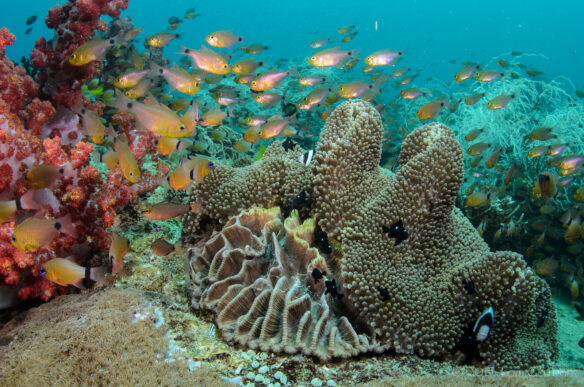
Visitors to tropical areas and income from tourism have grown substantially in recent decades and it is estimated that many countries, island nations or areas with reefs derive over 50% of their overall income from tourism. Tourism is the largest component of the economy of Hawaii, providing 25% of the income, about $17.8 billion in 2019, and also is the source of over 216,000 jobs. Australia’s Commonwealth Scientific and Industrial Research Organization (CSIRO) reported that nearly $100 billion in tourism was generated annually from the Great Barrier Reef, Florida reefs and Caribbean reefs in the 1990s. In many small island nations where there is not a significant industrial base, coral-reef-based tourism can significantly increase local sources of income, although that tourism depends upon healthy and vibrant reefs and clear clean water.
Coral reefs also can serve an important role in providing protection for coastlines with their communities, development and infrastructure by resisting the attack of storm waves, hurricanes and typhoons. The buffer or barrier provided by strong healthy reefs can help reduce shoreline erosion and coastal flooding, comes at no cost, and can also adjust to rising sea levels because corals are generally able to grow upward and keep pace with sea-level rise.
In addition to their value in economic terms, for anyone who has visited or spent any time snorkeling, scuba diving or otherwise experiencing a coral reef environment, it soon becomes clear why so many of us imagine that paradise is an atoll or tropical lagoon surrounded by a reef. For those societies and cultures, which for centuries have inhabited these tropical latitudes around the world, the reefs are the base of their history, culture, and daily lives. Coral reefs have immense value in their own right, although we have been slow to recognize this and understand the negative impacts of our expanding populations and their demands on the planet. The Coral Triangle, a roughly triangular area that includes the tropical waters of Indonesia, Malaysia, Papua New Guinea, the Philippines, Solomon Islands and Timor-Leste has been designated as the center for coral reef biodiversity. This area is a place surrounded by many developing nations where conservation is economically challenging for these very large and poor populations.
Threats to Coral Reefs
Water Pollution, Water Quality Decline and Marine Debris
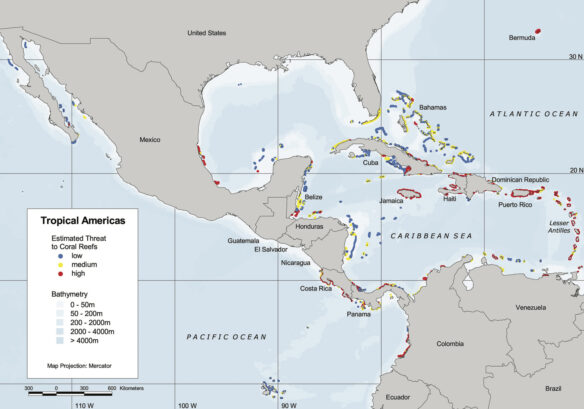
Pollution has been recognized for some time as one of the leading causes of coral reef degradation, and inputs or threats can come from a number of different potential sources. Population growth and an expanding tropical tourist industry means more wastewater delivered to the coastal waters, whether pumped directly into the ocean or reaching the ocean through a river, estuary or other terrestrial water source. Whether treated to some level or untreated, domestic wastewater or agricultural runoff with its fertilizer content, will increase the level of nitrogen around offshore reefs, often causing an overgrowth of algae, which can literally smother reefs by cutting off their sunlight. Agricultural runoff may also include pesticides, which can take a toll on often-delicate reef organisms. Plastic, Styrofoam, and other marine debris is a problem that is becoming both more widespread but also more publicly noticed. Floating trash can cover reefs, blocking off sunlight that polyps need to survive. Turtles often mistake plastic bags for jellyfish and eat them, blocking the turtle’s digestive tract, causing starvation. Seabirds, such as the albatrosses, are attracted by brightly colored plastic, whether floating or along the shoreline, and when consumed in large quantities, often lead to the death of these large and magnificent birds. Lost or discarded fishing nets – called “ghost nets” – made of non-biodegradable nylon, can snag on reefs and strangle thousands of fish, sea turtles and marine mammals, for decades.
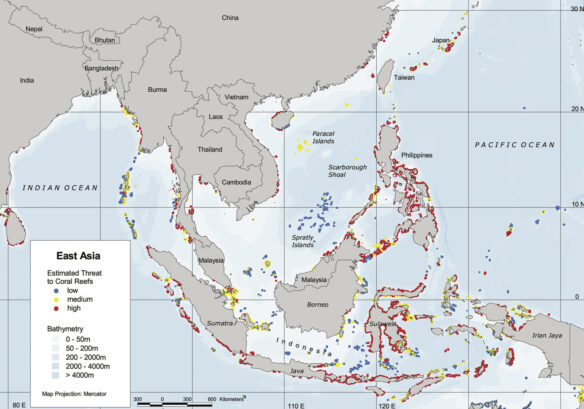
Overfishing and Destructive Fishing Practices
As stocks of fish have declined in tropical areas and new markets have opened up, the fishing methods utilized have become more extreme and damaging to the reefs themselves. It is believed that about 50% of the world’s coral reefs are threatened today by some combination of destructive fishing practices. Some of the current practices used on reefs are simply unsustainable, and the list includes fishing with poisons, blast fishing, and overfishing. Sodium cyanide is a broad-spectrum poison, which has been used in fumigating, in the electroplating and mining industries, and also for executing criminals. Its misuse in fisheries began in the early 1960’s when the demand for fish for aquariums in the USA grew, making them the leading importer of coral and reef fish. The other demand that accelerated was the live fish market in restaurants in Hong Kong, Taiwan and other Asian countries with large Chinese populations. Fish are selected and then plucked live from restaurant aquariums where some species may bring up to $300 a plate. This is popular as a status symbol for business events and quickly became a billion dollar a year business.
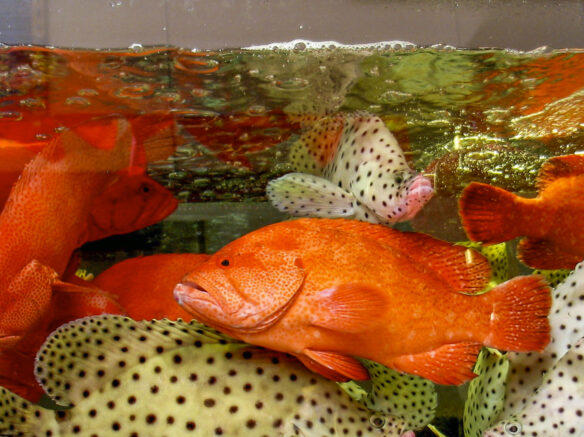
Divers, mostly from the Philippines, squirt cyanide into crevices in the reef, which stun the fish making them easier to catch. Although some of the larger tropical fish can metabolize cyanide, the chemical cloud produced during this process poisons smaller fish and other marine animals, such as coral polyps.
Despite the general outlawing of this practice throughout most Indo-Pacific nations, because of the high prices brought by the fish, weak enforcement capabilities, and also frequent corruption, the use has spread through reefs throughout the Philippines and Indonesia. As fish populations decline in one area, the illegal fishing moves on to a new area. The Philippines, home to most of the cyanide fishermen, has taken concrete action against this destructive activity by partnering with non-governmental organizations and training fishermen to utilize alternative fishing methods, using fine-mesh nets for example. Indonesia has taken similar steps. More aggressive enforcement has also been implemented whereby exported fish are randomly analyzed for cyanide. In addition, there are new regulations that are tightening controls on importation and distribution of cyanide, and there are public awareness campaigns to educate the people of the Philippines on the destruction created by this industry and its long-term impact on their reefs.
Other damaging fishing practices, such as banging on the reef with sticks, can destroy coral formations that normally serve as fish habitat. In some instances, explosives are used (blast fishing), which kill the fish by shock waves from the blast, leaving the fish to be easily picked up from the bottom or the ocean surface. Not only are the fish themselves killed, but the blasts kill other marine life in the blast area and also can destroy or damage living portions of the reef. While illegal, dynamite or explosive fishing still takes place in as many as thirty nations in the Indo-Pacific region. Once damaged, it can take many years for the reef to recover.
Overfishing is another leading cause for coral reef degradation. Many coastal communities around the tropical regions of the world depend upon reef fisheries for their food supply as well as their livelihood. In many cases, these fisheries have been locally managed and maintained at sustainable levels for centuries because the local people understood the concept of sustainability and the need to leave enough fish for successful reproduction and growth in future years. However, many fish stocks are now being overfished and threatened by a combination of increasing demand for fish, lack of alternative employment options, non-local fishing boats or fishermen, more efficient fishing methods, and inadequate management and enforcement.
An additional example of a destructive practice is overfishing of herbivores, such as parrotfishes. Where reefs have been damaged or bleached, herbivorous fish, if present, can control the growth of algae, which can cover the reef surface and restrict coral regrowth. This has been the case in the Caribbean, whereas in Moorea, parrotfishes are present and have kept the algae under control so reefs have been resilient.
In many cases, the fishermen doing the work, whether cyanide fishing, use of explosives or other destructive methods, make very little money and are exposed to significant risks of injuries and imprisonment, while the middlemen who control the industry make the profits. It has been repeatedly shown that the tourist and recreational diving industry can flourish where reefs are alive and healthy. It can sustain itself year after year and can generate more stable employment and income for local populations than the destructive reef fishing practices that have proven so damaging to so many formerly pristine tropical areas.
Sedimentation
Where rivers drain to coasts fringed by reefs, and land use changes in the watersheds have exposed soil and led to increased erosion rates, silt and clay carried downstream may eventually end up on the reef. Logging, vegetation clearing and burning, mining, or construction activity can all lead to soil loss and sediment deposition in coastal waters. While coral may be able to survive an occasional small amount of sediment, an excess may lead to death of the coral by smothering it and depriving it of both adequate light for photosynthesis, but also can significantly reduce the ability of the coral to feed from the overlying water. Mangrove trees and seagrass, which normally act as filters or traps for terrestrially derived sediment in some areas, are also being rapidly destroyed, which has increased the amount of sediment reaching some reefs. Mangrove forests are often cut for firewood or removed to create open beaches and have also been removed so fish or prawn farms can be constructed. There are efforts underway in some tropical nations or states to restore these valuable filters, which also protect the shoreline from wave attack.
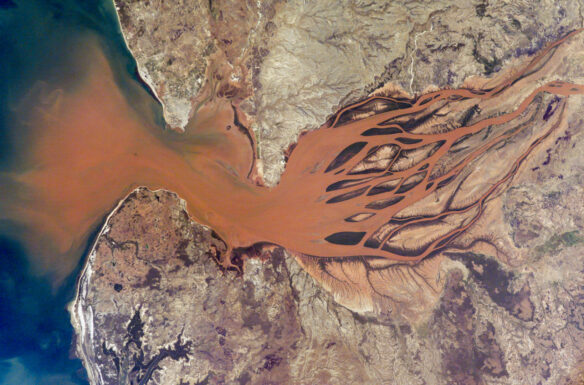
Blasting, Dredging and Filling for Coastal Construction
As coastal populations have risen and tourism has grown, the demand on coastal resources in the tropics has increased as it has elsewhere around the world. A major difference in the tropics, however, is that the nearshore and often, offshore areas, are alive, and typically consist of fringing reefs, barrier reefs or atolls. Whether harbors, shipping channels, airports, fill for housing, commercial or industrial development, construction has often led to direct loss of reefs. At one time in the past, big cities such as Hong Kong, Singapore, Manila and Honolulu had thriving coral reefs. Long ago, these reefs were destroyed by construction and development. Now, reefs growing near other coastal cities and communities are experiencing the same degradation and threats. Along many tropical islands or coasts, the only building material is coral, whether the active reef, or the sand or mud on the seafloor that consists of broken-down reef material. As a result, the coral or coral sand is mined or extracted to use for roads, for buildings, and also for cement.
Coral reefs are old, fragile and grow very slowly. They have been blasted, dredged, and buried around the world for development, often destroyed to build the airports or the harbors that allow airplanes to land or cruise ships to dock and deliver the people who come to see and experience the very reefs that are being damaged or destroyed.
Healthy reefs surrounded Singapore until the 1950s and 1960s when the government embarked on a national program of coastal land reclamation in order to expand its limited area. Over the past half-century Singapore has expanded their total land area an amazing 25% by obtaining rock, earth or sand from neighboring countries to extend the coastline outward and add to their existing land base. This led to completely covering over fringing and patch reefs as foundations for major port facilities, petrochemical industries, military training grounds, hotels and parks. The species of reef forming corals had declined from 30 to 8 by 1968. This continues today with sand being imported from other Southeast Asian countries in order to further expand their small nation by pushing the shoreline out.
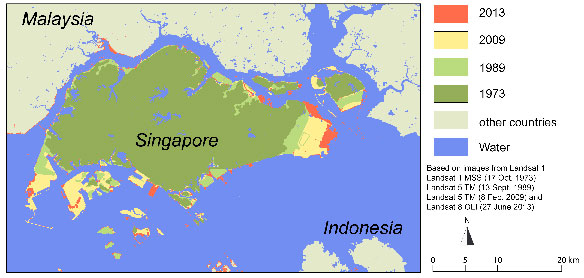
Coastal land is at a premium, typically the most expensive property on the planet, and with a global economy now 95% dependent upon marine transportation, giant container ports, oil refineries and terminals, cruise ship ports, and international airports are all expanding into these tropical waters with consequent loss of once healthy reefs. In all likelihood, none of these facilities or infrastructure will be removed in our lifetimes, although sea-level rise in the long-term future may make the decision for us. One long-term approach is to utilize marine zoning to establish areas that are suitable for certain types of use or for protection or preservation, rather than being sold for development to the highest bidder. The Earth’s coastlines are replete with unfortunate examples where development has occurred with no planning or land use designations, or a complete lack of enforcement of any existing regulations or practices. These practices are often driven by a desire for more income, which can be realized by auctioning off or selling shoreline land. A combination of efforts to modernize and expand economic development opportunities, corrupt government officials, and a general lack of appreciation for the value of coral reefs and the many benefits that they provide, has led many nations or regions down a path to destruction of these important habitats and ecosystems.
Tourism- Hotels, Boats and Divers
Tourist resorts seem to be expanding exponentially in formerly pristine tropical areas, and many of these are virtually self-contained cities, with hundreds or thousands of people visiting and employed. While these clearly contribute very significant income and employment to the local economies, there is also the potential for substantial environmental impact. While there are eco-resorts that have appeared in recent years, and which are planned to significantly reduce environmental impacts, many of the huge existing hotel and resort complexes may be quite a different story.
One of the most obvious potential impacts is the treatment and disposal of the sewage generated by all those people, whether discharged directly into the coastal waters, or into septic systems, with seepage that may eventually reach the adjacent ocean. The effluent will introduce nutrients, which fertilize algae and other plants that can literally grow over the reef corals. The treatment and release of wastewater must be very carefully engineered and planned if these negative impacts are to be avoided, and the reefs preserved. The level of treatment as well as wave activity and circulation or the degree of natural flushing at the discharge point will have an important influence on the impact of the effluent. High-level treatment, along with onshore evaporation or percolation ponds, or very long offshore outfalls, are two possible solutions.
In addition to the direct effects of the countless tourists that stay in large resorts complexes in places like Hawaii, Cancun, Tahiti, Fiji, the Bahamas and Bermuda, many studies have documented the impacts to the offshore reefs from divers, snorkelers, dive boats and cruise ships. Scuba divers potentially can have far greater impacts on corals than snorkelers who are usually swimming along at the surface. Direct physical damage to reefs includes accidental or intentional breaking of branched coral, trampling or walking on the reef surface, particularly at shoreline access points. Dive or fishing boat anchors can damage reefs by breaking off coral when anchors drag or are pulled out. Larger boats with bigger anchors can cause even greater damage. Areas of heavy recreational boating, diving or fishing will obviously experience more serious consequences than areas with only occasional use. Installing permanent moorings where boats can tie up can help eliminate or reduce damage from anchors, and training and briefing of divers prior to water entry can also minimize damage from divers themselves.
Ocean Warming and Coral Bleaching
Sustained warmer water temperatures can result in coral bleaching. Normal corals are greenish, yellowish, or gold to brown in color, due to the symbiotic algae living within the polyps. These algae, called zooxanthellae, normally provide the coral with up to 80-90% of their energy through photosynthesis, making them essential for coral survival and growth. The algae are also normally responsible for the color of coral. When corals experience stress, typically when the water is much warmer than normal, they can expel their algae, for unknown reasons, and turn white, or are “bleached”. There is a chance that bleached coral can survive and recover if conditions return to normal quickly enough. However, in the face of other human-induced pressures, corals have become vulnerable. In many cases, bleached coral colonies die. Algae can cover dead coral, which makes recolonization by young coral larvae more difficult.
Global warming is increasing the surface temperature of the oceans as well as the atmosphere. On shorter time scales, El Niño events lead to changes in ocean circulation and also in water temperatures over large areas of the tropical oceans that may last for several months or longer. It has been these events in recent decades that have produced an increasing number of prolonged and widespread bleaching events.
Coral bleaching is not new but has been recognized by scientists for nearly a century. Prior to the 1980’s, when coral reef research intensified, localized bleaching incidents were reported and attributed to such factors as extremely low tides, hurricane damage, torrential rainstorms, freshwater runoff near reefs, or toxic algal blooms. Over the past 40 years or so, however, major bleaching events have all been associated with periods of exceptionally warm sea surface temperatures. These correlations between rising global temperatures and the occurrence of the two strongest El Niño events in the past century left little doubt that the unprecedented coral bleaching and mortality being observed today is linked to climate change.
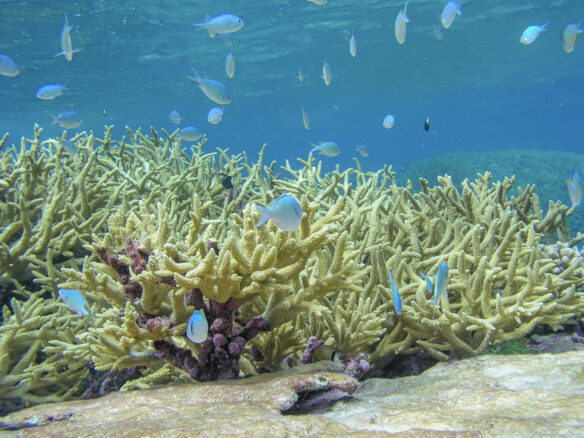
Coral reef degradation has accelerated on a global scale since the late 1970’s to early 1980’s. Between 1876 and 1979 (103 years), there were only three bleaching events reported anywhere, although there were no doubt far fewer observers or scientists in the water for many of the earliest years. Between 1979 and 1990 (11 years), however, over 60 bleaching events were recorded. Many of these, 1982-83, 1987, 1997-98, 1995, and 2002, were all El Niño years, with elevated water temperatures. In 1987, the first recorded major bleaching event occurred in the Caribbean. During 1997-98 El Niño, massive bleaching occurred along the entire length of the largest barrier reef in the Northern Hemisphere near Belize. One hundred percent mortality was observed in some areas with no recovery, instead sponges and algae grew over the reef. In Australia, global mass bleaching was observed over 50% of the reefs during that event, and sea surface temperatures were the highest ever recorded. Assessments made in late 2000 showed that 27% of the world’s reefs had been effectively lost, with the largest single cause being the massive climate-related coral bleaching event of 1998. This destroyed about 16% of the coral reefs of the world in 9 months during the largest El Niño climate event ever recorded. Continued surveys in the ten following years, however, indicated that the coral reefs in the Indo-Pacific region had largely recovered (more quickly and completely than expected) from the devastating 1998 event that killed up to 90% of corals on some reefs.
In 2005, the U.S. lost half of its coral reefs in the Caribbean in one year due to a massive bleaching event. The warm waters centered on the northern Antilles near the Virgin Islands and Puerto Rico and expanded southward. Comparison of satellite data from the previous 20 years confirmed that thermal stress from the 2005 event was greater than the previous 20 years combined.
The geographic extent of bleaching seems to expand with each new El Niño, particularly when combined with long-term global warming. Fifteen of the 16 warmest years on Earth since record keeping began in the late 1800s have all occurred since 2000. Record hot temperatures in the Pacific Ocean in 2015 have fueled the worst coral-bleaching event ever witnessed along the northern third of Australia’s Great Barrier Reef. From the air or underwater, gleaming pale white skeletons dominate the seascape. Aerial surveys have shown 95% of the Great Barrier Reef’s northern reefs were rated as severely bleached, and only five out of 520 reefs surveyed were unaffected by beaching. The symbiotic relationship between the coral and their algae is a somewhat fragile one and algae don’t like it hot. Unfortunately, all signs are pointing in the direction of warmer waters in the future. This is a huge problem for the tropical oceans of the world, and not one with a simple or local solution.
Ocean Acidification
Since the beginning of the Industrial Revolution, the oceans have absorbed approximately 525 billion tons of carbon dioxide from the atmosphere, or about one third of the anthropogenic carbon emissions released. While the ocean uptake of carbon dioxide has significantly reduced the greenhouse gas levels in the atmosphere and minimized some of the impacts of global warming, the ocean’s uptake of carbon dioxide is having negative impacts on the chemistry and biology of the oceans. The pH of ocean surface waters has already decreased by about 0.1 units from an average of about 8.21 to 8.10 since the beginning of the Industrial Revolution. Estimates of future atmospheric and oceanic carbon dioxide concentrations suggest that by the middle of this century, atmospheric carbon dioxide levels could reach more than 500 ppm, and near the end of the century they could be over 800 ppm. This would result in an additional surface water pH decrease of approximately 0.3 pH units by 2100.
Corals build their skeletons out of calcium carbonate, just like shellfish and many different plankton. They need to have calcium and carbonate ions available in seawater in order to build reefs. This is particularly important in the earliest and most fragile life stages where a coral larva is ready to settle down on a hard surface and begin to metamorphose into a small polyp and grow a skeleton. Where lower pH levels are present, some studies have shown a 50-75% decline in larval settlement. Other studies have shown that mature corals calcify or grow their skeletons at reduced rates with lower pH waters, thereby making the corals more brittle and subject to other threats. While we refer to tropical reefs as “coral reefs”, they are in fact, composed of a large number of other calcium carbonate secreting organisms, coralline algae, mollusks, sea urchins, clams, bryozoans, and foraminifera among others, which are all affected by more acidic waters.
Coral reefs were, in fact, among the first marine ecosystems to be recognized as vulnerable to ocean acidification. While individual species vary in their response to changing pH, a number of different laboratory experiments show that a doubling of the carbon dioxide in the atmosphere (and we are now at about a 40% increase over pre-industrial levels), which translates to a lower pH in seawater, would result in a 10 to 50% decline in the rate of calcification of reef-building corals. With more energy having to go into calcification, less energy is available for other physiological processes. Think about early humans having to invest almost all of their time and energy into hunting for food; there was little left over for anything else and progress and change came very slowly.
With less calcification, there is less coral growth or accretion, and overall we end up with a less healthy reef. Over time, if this trend continues, coral growth decreases, they become weaker, and will be more easily damaged or destroyed. Over time, coral itself will likely be outcompeted by other species, typically large algae. This often happens with damaged or weakened reefs today, where macroalgae grow over the coral skeletons and leave no surface exposed where coral larvae can settle to reestablish themselves. Without the living coral, a reef’s biodiversity is diminished and other reef organisms, like fish, no longer find this a viable habitat. In turn, the lack of coral reefs will also reduce the carbon dioxide buffering capacity of the ocean, thus increasing ocean acidification at an even faster rate.
This is a much bigger issue than simply an interesting and very large-scale biological experiment. Tourism and recreation in reef areas is based primarily on the coral reefs and the diverse and colorful fish that inhabit these environments.
Without a healthy and vibrant reef, tourism and fisheries begin to decline and a significant portion of the economy and food supply disappears. Strong, healthy growing reefs also are the best natural barriers or buffer to wave attack, storms, hurricanes or typhoons. Without them, communities and development in tropical regions will be more exposed and threatened.
Were the ocean’s trend towards increasing acidification to be reversed, the reduction in calcification could be slowed and eventually reversed. Unfortunately, however, there is little hope of reducing the acidification anytime soon due to the enormity of the system – atmosphere and ocean – and the high carbon dioxide levels that are already embedded in both.
Where do we go from here?
Coral reefs historically have formed the fundamental biological, geological and economic framework for the coastlines of many countries and small island nations in the tropical latitudes around the world. Fisheries and tourism have been at the core of the economies of many of these areas, but development of many types, from dredging and blasting for harbors to filling for airports and industrial or tourist development, has led to damage and destruction of reefs over large areas. The direct and indirect impacts of destructive fishing practices, land-use changes that impact coastal waters, tourist activities and their impacts, combined with global changes in ocean temperature and chemistry have all taken their toll on these fragile environments and important ecosystems.
What is the global status of reef health? The most recent (2008) State of Coral Reef Ecosystems Report developed by the National Oceanographic and Atmospheric Administration (NOAA) is an ongoing effort to evaluate the condition of the nation’s shallow water coral reef ecosystems. The report includes studies of 15 locations or jurisdictions within the USA and the Freely Associated States (FAS) in the Caribbean Sea and Pacific Ocean. Highlights of the report include:
- Approximately half of the coral reef ecosystem resources under US or FAS jurisdiction are considered to be in poor or fair condition and have worsened over time due to several natural and anthropogenic threats.
- Reef habitats adjacent to populated areas tend to experience more intense threats from issues like coastal development and recreational use, but even remote reefs far from human settlements are imperiled by illegal fishing, marine debris, and climate-related impacts such as bleaching, disease and acidification.
This same NOAA report also evaluated the status of global coral reef ecosystems, and includes additional highlights:
- The world has effectively lost 19% of the original area of coral reefs; 15% are seriously threatened with loss within the next 10–20 years; and 20% are under threat of loss in 20–40 years. The latter two estimates have been made under a ‘business as usual’ scenario that does not consider the looming threats posed by global climate change or that effective future management may conserve more coral reefs.
- 46% of the world’s reefs are regarded as being relatively healthy and not under any immediate threats of destruction, except from the ‘currently unpredictable’ global climate threat.
- The NOAA report’s recommendations for action to conserve coral reefs include:
- Urgently combat global climate change
- Maximize coral reef resilience
- Scale up management of protected areas
- Include more reefs in marine protected areas (MPAs)
- Protect remote reefs
- Improve enforcement of MPA regulations; and
- Help improve decision making with better ecological and socioeconomic monitoring
The challenges facing coral reef health and survival today fall into two different categories: 1) Those that are more geographically localized due to specific human activities or practices. These include most of the threats or impacts discussed above: harmful coastal development, water pollution, sedimentation, overfishing or harmful fishing practices, and the impacts of tourists, boats and divers, for example. 2) Those that are global or regional in nature, the major ones being climate change (long-term and also El Niño events) and associated ocean warming and coral bleaching, and ocean acidification.
The first set of local impacts will need to be approached or attacked at a local level by the governmental agencies or legislative groups who control coastal land use and development practices, water quality and runoff, fishing and related activities. The long-term benefits of healthy reefs to overall local economies and food supply have to be recognized and given priority over short-term profits for a few. While it is unlikely that intense development in areas of formerly healthy reefs, such as Singapore, Hong Kong or Honolulu will ever be removed (except by future sea-level rise), what is left can be preserved and protected if there is the political will to do so.
There is also cautious hope for reef rehabilitation. A team of researchers from Florida and Hawaii has recently developed a process called micro-fragmentation to help barren, dead or bleached sections of coral recover. The technique involves transplanting different species of coral tissue onto coral in land-based nursery settings. Early indications are that the growth rates are several times faster than their wild relatives offshore and do offer some hope for restoring damaged reefs.
The larger global issues of a warming and more acidic ocean are far more complex. These will require global solutions to address and arrest climate change by wholesale changes in our use of energy, moving far more rapidly away from our dependence on fossil fuels and towards renewable energy resources. We have no other choice and the sooner we accelerate that transition, the more likely it is that we will be able to save some of the planet’s remaining coral reefs for ourselves, our children and grandchildren, as well as future generations.
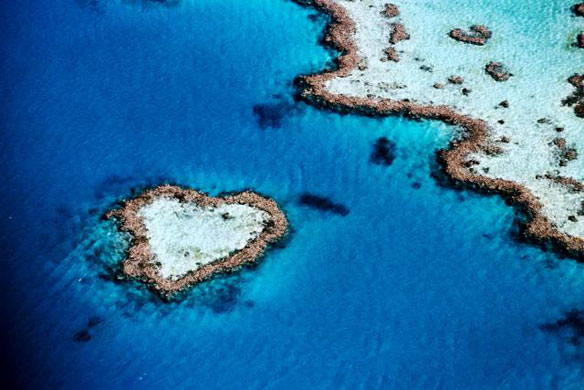
Scientists launch tool to detect bleaching of coral reefs in near real time
Scientists have launched a world-first system to detect in almost real time the bleaching of the planet’s coral reefs that are under severe threat from global heating.

Will Probiotics Save Corals or Harm Them?
Bacteria are helping corals in lab tests, but risks rise as treatments are applied in the wild.
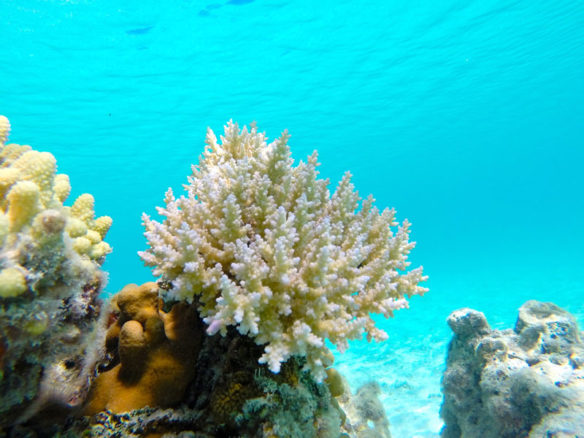
Massive Coral Colony Found in American Samoa
Researchers with NOAA and several other agencies found the massive oval-shaped colony during a monitoring survey in the waters around Ta’u Island, known for large coral colonies.
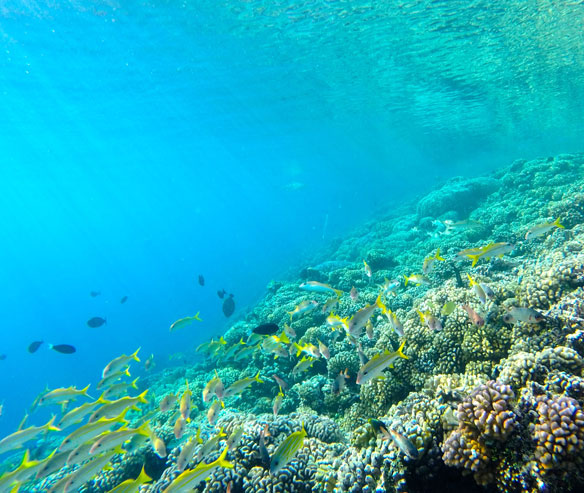
Massive coral reef taller than the Empire State Building found off Australian coast
During a 12-month exploration of the ocean around Australia, scientists last week discovered an enormous detached coral reef in the Great Barrier Reef — the first to be discovered in over 120 years.
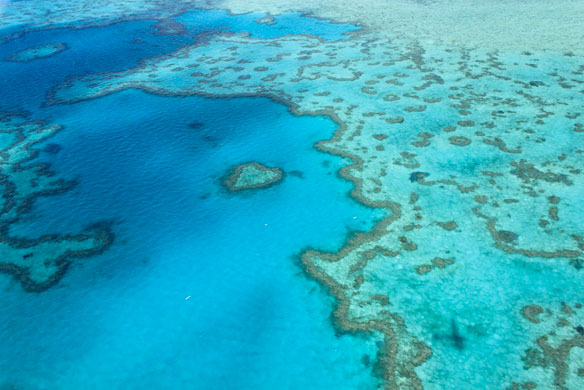
The Great Barrier Reef Has Lost Half Its Corals
The Great Barrier Reef, one of the earth’s most precious habitats, lost half of its coral populations in the last quarter-century, a decline that researchers in Australia said would continue unless drastic action is taken to mitigate the effects of climate change.

Mangrove loss has fallen dramatically, but the forests are still in danger
According to satellite data, mangrove loss has fallen dramatically in the past two decades, with human-caused mangrove destruction declining even faster than loss from natural causes.
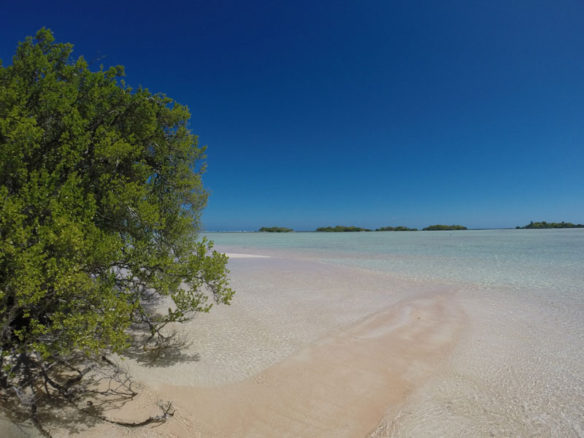
Mapping the Roots of Mangrove Loss
While the rate of losses has declined, the ecosystems are still threatened and are facing more environmental stress.
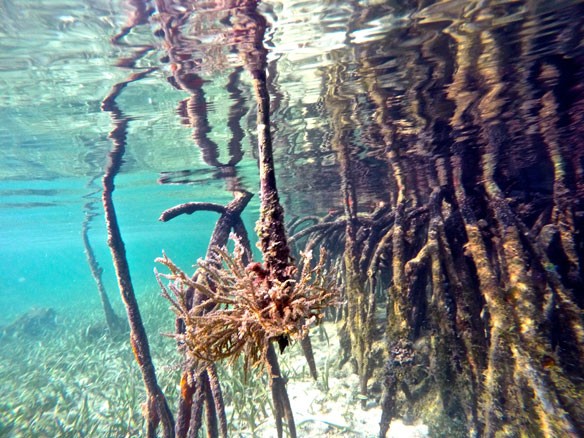
Nigeria: restoring mangrove forests in the Niger Delta
The mangrove forests of the Niger Delta in southern Nigeria will soon be restored. It is a commitment recently made by Nigeria’s Minister of State for the Environment Sharon Ikeazor.
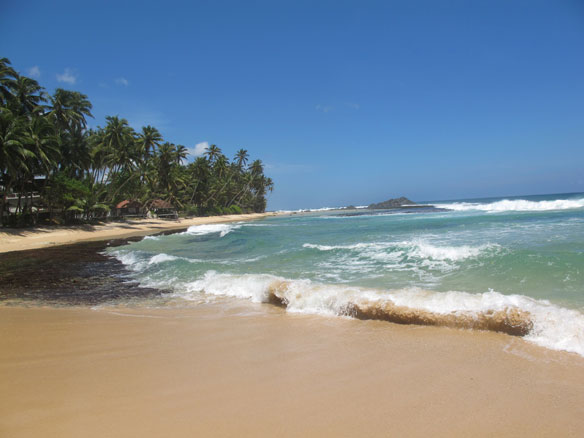
Civil war didn’t hurt this Sri Lankan mangrove forest, but shrimp farming might
More than a decade after the end of the civil war, the ecology of the picturesque nature reserve on Vidattaltivu coastal belt in Sri Lanka’s north, is under threat: there are plans to set up a shrimp aquaculture park here, which environmentalists have blasted as “environmental suicide…”
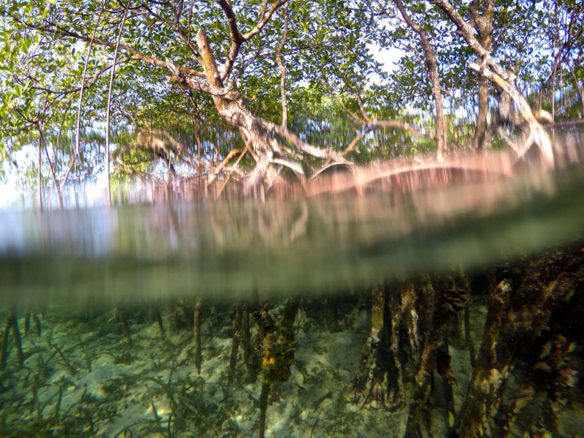
Two vital buffers against climate change are just offshore
A new study finds that about 31 million people worldwide live in coastal regions that are “highly vulnerable” to future tropical storms and sea-level rise driven by climate change. In some of those regions, however, powerful defenses are located just offshore.

Cyclones can damage even distant reefs
Big and strong cyclones can harm coral reefs as far as 1000 kilometers away from their paths, new research shows. A new study sounds a warning about the way strong cyclone winds build extreme seas that affect coral reefs in Australia and around the world.
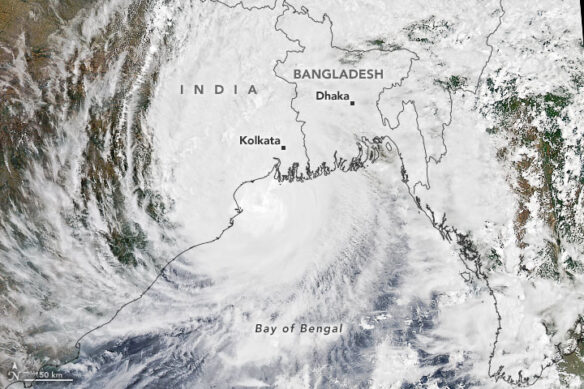
Cyclone Amphan Reinforces Urgent Need for Climate Adaptation Planning
The south of Bengal has been decimated by the category 5 super cyclone Amphan during the night of 20 May and the early hours of 21 May. However, when combined with other threats, most of which have an anthropogenic origin, the sustenance of the ecosystem can indeed be found wanting.

The power of trees
A group of researchers documented how coastal areas protected by the presence of wide belts of mangrove trees, are better protected against losses, and their economies rebound more quickly.
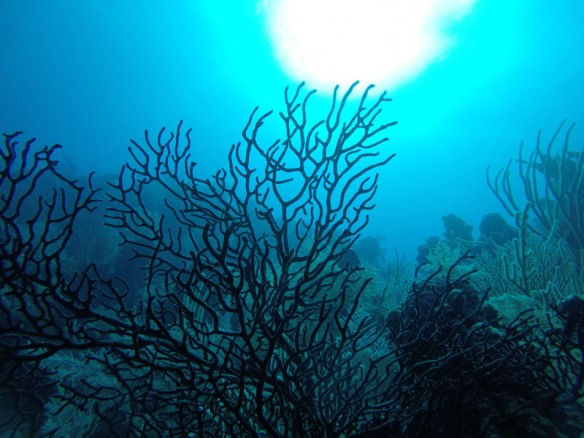
If we can put a man on the moon, we can save the Great Barrier Reef
Scientists recently confirmed the Great Barrier Reef suffered another serious bleaching event last summer—the third in five years. Dramatic intervention to save the natural wonder is clearly needed.

The man helping to save Senegal’s mangroves
With the help of the local population, one man has led a program that has planted 152 million mangrove buds in the Casamance Delta of southern Senegal over the past decade. The reforestation project has become one of the largest of its kind in the world.

Five trees or a latte? Coastal communities seek help for mangroves
A Singapore-based online platform is to launch an app and website in the next six months using blockchain technology to fund mangrove restoration projects across India and Southeast Asia, to add 1 billion mangrove trees by 2025.

The super-corals of the Red Sea
As seas warm and acidify with climate change, corals worldwide are bleaching – but in the north of the Red Sea there is a ray of hope.

Great Barrier Reef suffers worst-ever coral bleaching
Australia’s Great Barrier Reef has suffered its most widespread coral bleaching on record, scientists said, in a dire warning about the threat posed by climate change to the world’s largest living organism.
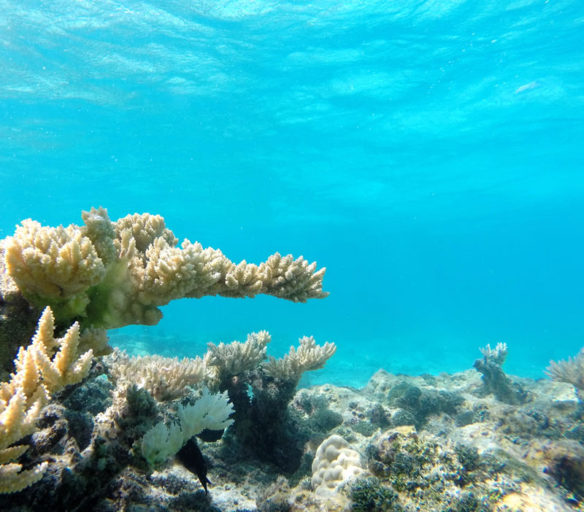
Coastal pollution reduces genetic diversity of corals, reef resilience
A new study found that human-induced environmental stressors have a large effect on the genetic composition of coral reef populations in Hawai’i.
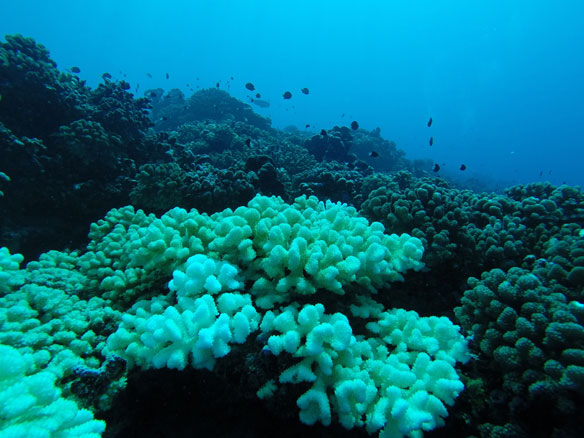
Great Barrier Reef suffers third mass bleaching in five years
Australia’s Great Barrier Reef has suffered another mass bleaching event – the third in just five years.
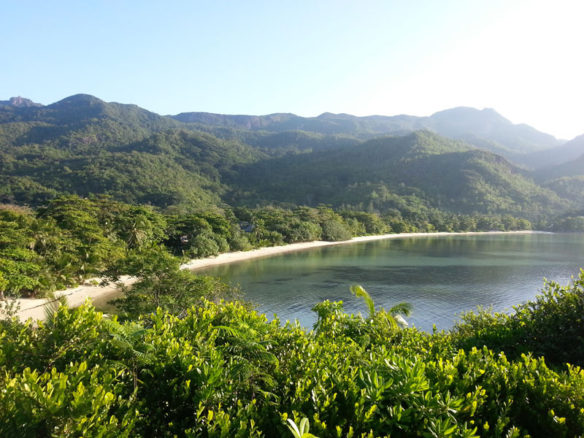
Mangrove conservation can pay for itself in flood protection
The natural coastal defenses provided by mangrove forests reduce annual flooding significantly in critical hotspots around the world. Without mangroves, flood damages would increase by more than $65 billion annually, and 15 million more people would be flooded, according to a new study.

This vanishing forest protects the coasts—and lives—of two countries
Rising waters and illicit logging are killing the trees in the Sundarbans, the natural wall that protects the India-Bangladesh coast.

Pemex is illegally destroying protected mangrove trees to build an $8 billion oil refinery
Mexico’s state-owned oil company Pemex has defied a government order by cutting down protected mangrove trees for the construction of an oil refinery. Satellite images show a landscape razed presumably to accommodate the controversial $8 billion project.
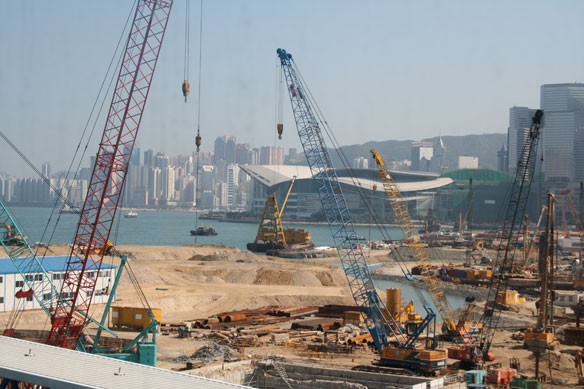
Environmental damage to coral reefs in South China Sea
New research reveals the unseen environmental damage being done to coral reefs in the hotly contested South China Sea, as China and other nations jostle for control of the disputed sea lanes.

Mangrove forests provide cause for conservation optimism, for now
More than a decade ago, academics warned that mangrove forests were being lost faster than almost any other ecosystem, including coral reefs and tropical rainforests. But things are looking better.

Climate change could kill all of Earth’s coral reefs by 2100, scientists warn
Climate change could destroy almost all of Earth’s coral reef habitats by 2100, according to new research.
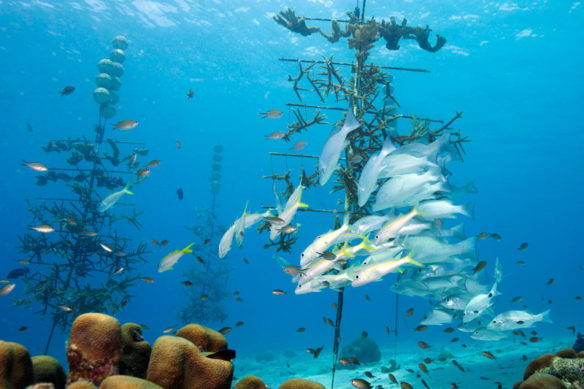
Collaborative Conservation Approach for Endangered Reef Fish Yields Dramatic Results
Nassau Grouper populations increased threefold in response to dynamic fishing management actions in the Cayman Islands
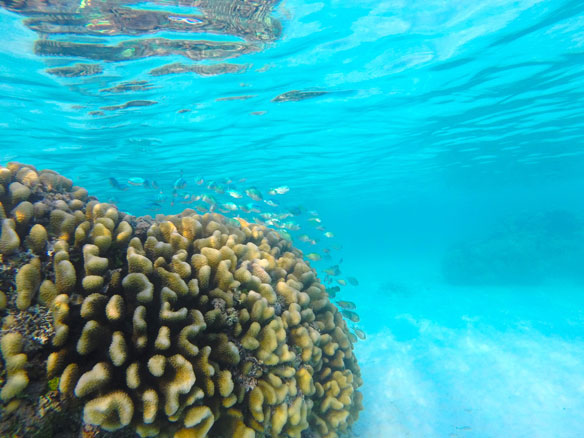
Integrating social and ecological science for effective coral reef conservation
While many conservation plans focus on only environmental indicators for success, a new coral reef program is trying a relatively new approach: focusing on both social and ecological processes and outcomes to ensure a long-term future for coral reef systems.
